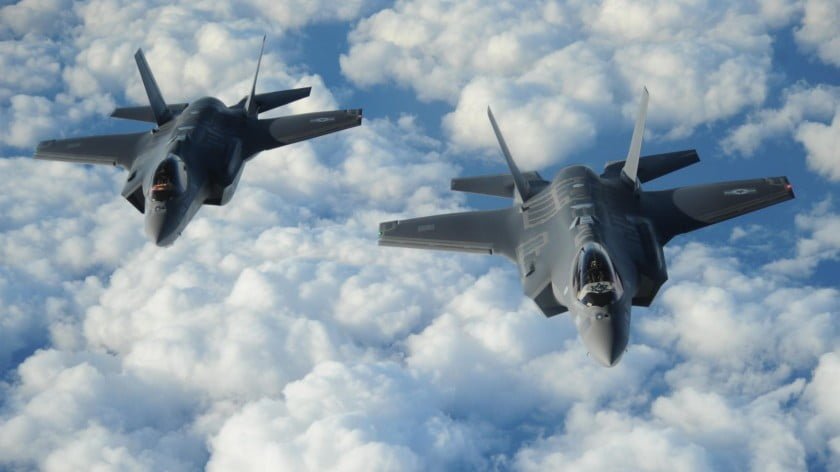The “IAF’s” Use of Civilian Airliners as “Shields” Raises a Few Questions
It’s shameful that the “Israeli Air Force” used civilian airliners as “shields” for carrying out its Christmas attack against Syria, but this irresponsibly dangerous maneuver also raises some questions about a few narratives that were previously taken for granted.
No one can put forth any argument morally justifying the “Israeli Air Force’s” (“IAF”) shameful act of using civilian airliners as “shields” for carrying out its Christmas attack against Syria, and it’s rightly been condemned by Damascus, Beirut, and Moscow, but this irresponsibly dangerous maneuver also raised some questions about a few narratives that were hitherto taken for granted.
The first one is obviously about the much-touted “invulnerability” of the “IAF” in the eyes of the Western public, which was disproven by this very fact because it wouldn’t have had to hide behind civilian airliners if that was true. Accordingly, one naturally wonders what the “IAF” was so afraid of that it felt compelled to do this cowardly move.
Many in Alt-Media want to believe that it’s the S-300s but Russia only complained about what happened many hours after it occurred and didn’t even scramble its fighter jets or use its world-class electronic warfare capabilities to ward off what some are assuming was a “surprise attack”. This crucial detail suggests that Russia didn’t regard the incoming “IAF” jets as a threat because it probably received prior notification of the attack through the so-called “deconfliction mechanism” that’s been in use between the two since right before the September 2015 anti-terrorist intervention began.
After all, the only one of the countries involved that made any attempt to stop this attack was Syria, seeing as how Russia didn’t employ its fighter jets or electronic warfare responses and Lebanon practically has no modern means of defending itself in this domain anyhow. It can therefore be implied that the “IAF” did what it did in order to deter Syria from responding and “getting lucky” like it did back in February when it downed one of “Israel’s” jets for the first time in decades.
It’s paradoxical that the “IAF” might be so concerned about the safety of its pilots that it would put dozens of civilian air travelers at risk, but it shouldn’t be forgotten that it did this exact same thing back in September vis-a-vis a Russian spy plane but with dramatically different results. At that time, a Syrian S-200 operator fired a missile that an “Israeli” pilot narrowly avoided by executing a midair tactical maneuver that tricked the armament into hitting the Russian spy plane “shield” instead.
Syria supposedly responded with gusto this time around too but thankfully neither of the comparatively less-skilled civilian pilots got shot down unlike their highly trained Russian spy plane counterpart three months ago, making one wonder whether this was just a series of Christmas miracles or if Syria really did shoot at those “IAF” jets and missiles in real time as much as it says that it did.
What appears to have happened is that Syria probably exaggerated the scale of its response and downplayed the damage in order to “save face” while prudently refusing to take the chance of using the S-200s and risk repeating the tragedy that it was partially responsible for in September the last time that “Israel” provoked one of its operators to take a shot in spite of the collateral damage that it could possibly cause.
Although Russia evidently didn’t do anything to intervene during the latest attack, it can at least be credited for publicly corroborating the claims that “Israel” did indeed carry out an irresponsibly dangerous midair tactical maneuver by shamefully using civilian airliners as “shields”, but the “IAF’s” actions shouldn’t have come as much of a surprise since it did this before in September. Thus, the next question becomes one of “what is to be done?”
It’s improbable that no air force in the world ever thought of their adversaries utilizing this tactic before “Israel” did a few months ago, and even in the unbelievable instance that this might have been the case, then that still means that Russia and Syria had at least a quarter of a year to devise an appropriate response to it in the event that it happened a second time. Instead, “Israel” once again succeeded in pulling off a dangerous bombing run with impunity.
Russia clearly doesn’t approve of the methods that “Israel” used even though it probably was forewarned through the “deconfliction mechanism” that an attack of some sort would happen and therefore didn’t feel the need to respond since it was assured that its own forces wouldn’t be endangered, but that doesn’t explain why Syria didn’t do anything about this at the time other than shoot a couple of “fireworks” into the air.
As uncomfortable as it may be to countenance, it could very well be that the “IAF” — for as shameful as its decision to use civilian airliners as “shields” is — might have found the most effective way to deter any meaningful response to its strikes from targets that are responsible enough not to put civilian lives in jeopardy during brief midair “hostage crises” but also lack the electronic warfare capabilities that Great Powers such as Russia wield for responding to these provocations if they have the political will to do so.
It should be said at this point that Russia isn’t the world’s “sky marshal” and its military has no obligation to impossibly monitor each and every civilian flight coming to and from Lebanon and Syria in order to respond at a moment’s notice in case the “IAF” briefly takes them “hostage” as “shields” while bombing IRGC and Hezbollah positions in the Arab Republic, nor for that matter did it ever commit itself to protecting those two targets from “Israel” after “passively facilitating” over 200 of Tel Aviv’s strikes against them from January 2017-September 2018 alone.
Along the same token, Syria learned its lesson from September and doesn’t seem as “trigger-happy” as it was when it accidentally shot down the Russian spy plane after one of its S-200 operators took a chance at hitting the enemy target in spite of the obvious risk of blowing up its ally’s asset instead, so it can’t be faulted for playing it safe this time around no matter how infuriating it must be that the “IAF” used civilian airliners as “shields”.
Nobody’s going to find this conclusion popular, but it appears as though “Israel” just found the perfect way to exploit the “sweet spot” between Russia’s lack of political will to respond and Syria’s inability to safely do so in order to continue bombing IRGC and Hezbollah positions in the Arab Republic with impunity unless something unexpectedly changes to make it think twice about doing so next time.
By Andrew Korybko
Source: Eurasia Future







